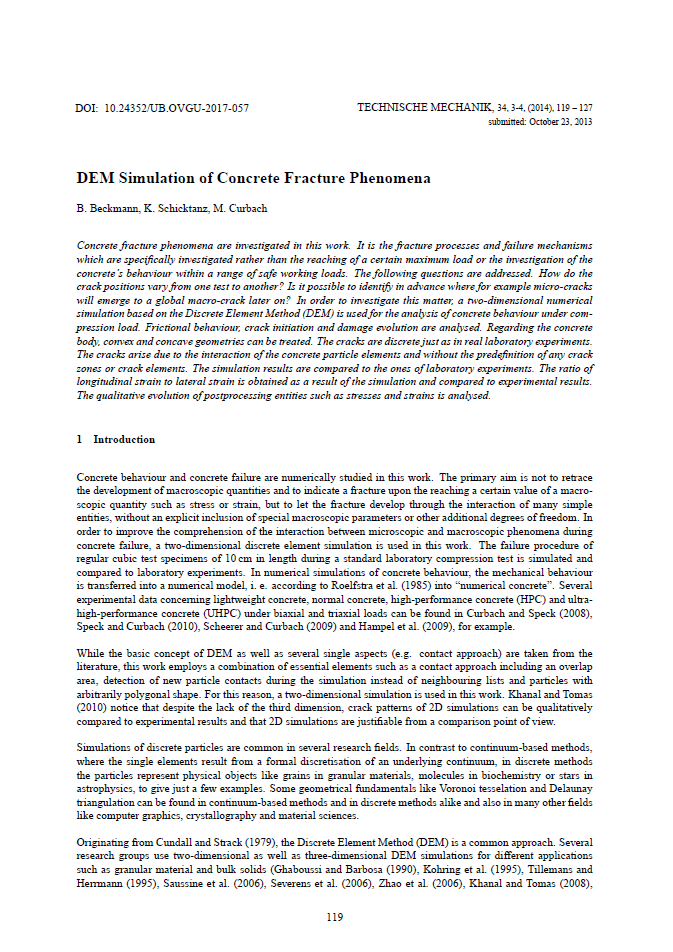DEM Simulation of Concrete Fracture Phenomena
DOI:
https://doi.org/10.24352/UB.OVGU-2017-057Abstract
Concrete fracture phenomena are investigated in this work. It is the fracture processes and failure mechanisms which are specifically investigated rather than the reaching of a certain maximum load or the investigation of the concrete’s behaviour within a range of safe working loads. The following questions are addressed. How do the crack positions vary from one test to another? Is it possible to identify in advance where for example micro-cracks will emerge to a global macro-crack later on? In order to investigate this matter, a two-dimensional numerical simulation based on the Discrete Element Method (DEM) is used for the analysis of concrete behaviour under compression load. Frictional behaviour, crack initiation and damage evolution are analysed. Regarding the concrete body, convex and concave geometries can be treated. The cracks are discrete just as in real laboratory experiments. The cracks arise due to the interaction of the concrete particle elements and without the predefinition of any crack zones or crack elements. The simulation results are compared to the ones of laboratory experiments. The ratio of longitudinal strain to lateral strain is obtained as a result of the simulation and compared to experimental results. The qualitative evolution of postprocessing entities such as stresses and strains is analysed.





